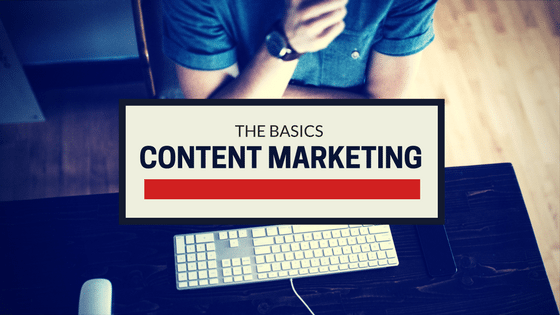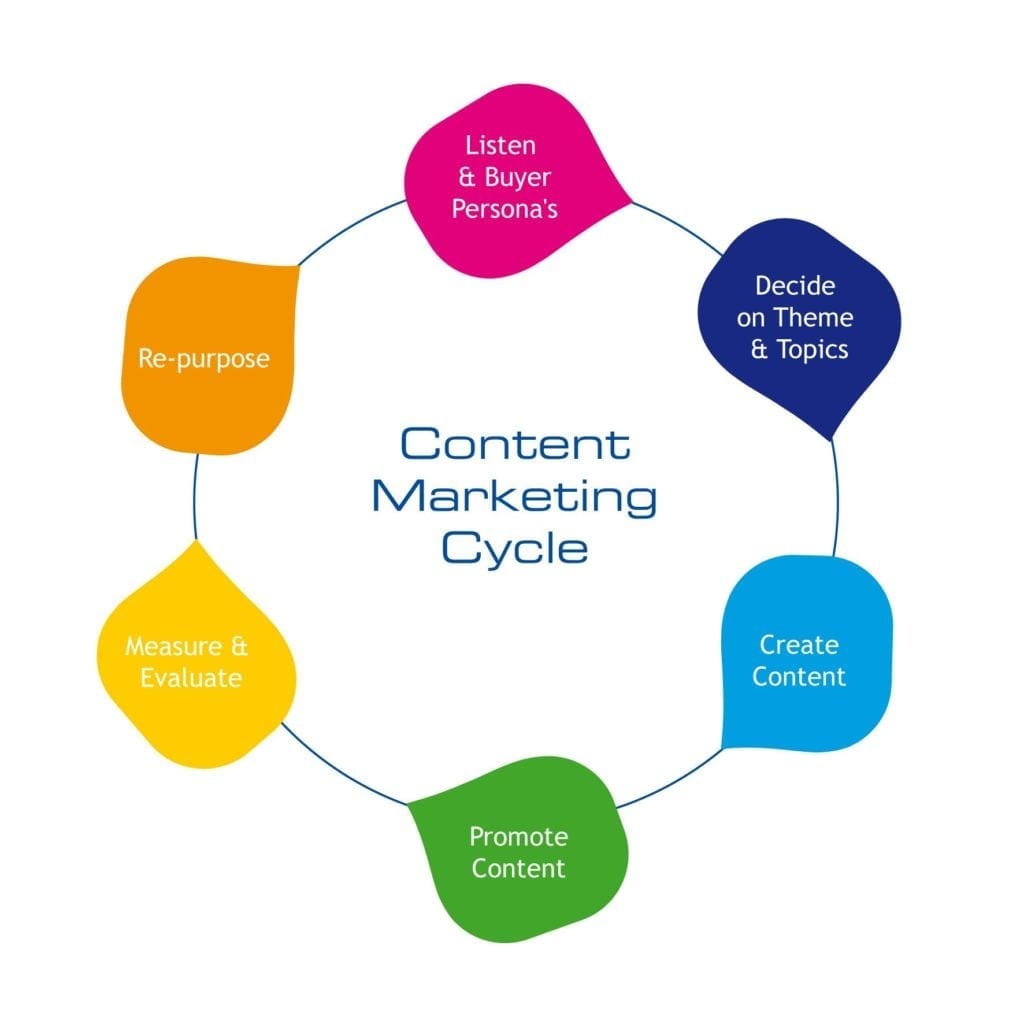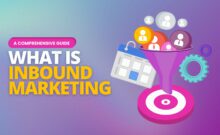The what?
Content marketing is any marketing that involves the creation and sharing of media and publishing valuable content in order to acquire and retain customers. This information can be presented in a variety of formats, including news, video, white papers, e-books, infographics, case studies, how-to guides, question and answer articles, photos, etc
The key word here is “valuable.” It’s what changes this definition from one that could describe almost any form of advertising or marketing. You can tell if a piece of content is the sort that could be part of a content marketing campaign if people seek it out, if people want to consume it, rather than avoiding it.
By 2014, Forbes Magazine’s website had written about the seven most popular ways companies use content marketing. In it, the columnist points out that by 2013, use of content marketing had jumped across corporations from 60% a year or so before, to 93% as part of their overall marketing strategy. Despite the fact that 70% of organizations are creating more content, only 21% of marketers think they are successful at tracking ROI. That is where Marketing Automation and the advent of unified SAAS offerings has helped closed the gap. Click here to find out more about Marketing Automation.
The Why?
Perhaps more important than understanding what content marketing is, is to understand why content marketing is important to your business. First we need to understand the four steps of the buying cycle:
- Awareness. Prior to awareness a customer may have a need, but they are not aware there is a solution.
- Research. Once a customer is aware there is a solution, they will perform research to educate themselves. For example, a car buyer will try to find out what different types of cars exist, and which one will fit their needs.
- Consideration. At this point the customer starts comparing different products from different vendors to make sure they’re getting a high quality product at a fair price.
- Buy. Finally, the customer makes their decision and moves forward with the transaction.
Add value. That’s the secret. Or rather an open secret. It’s not really a secret at all. We haveve already talked about it throughout this piece. Although when you look at some of the marketing companies engage in you wonder if they’re purposely avoiding the obvious. We skip advertising when it provides little to no value.
Content Marketing Strategy Tip: For many businesses, traditional advertising has an efficiency problem. Social media advertising combats that inefficiency by providing you the ability to target users based on a very specific set of traits or interests.
When done right, content marketing provides useful, entertaining, relevant content that customers want, even crave.
The How?
When you’re planning a piece of content, how do you decide what is worth creating and what you should pass on? Every piece of content you commit to should serve a clear purpose for your marketing efforts.
So what are you trying to accomplish? Here are some common content marketing objectives to consider:
- Increase brand awareness in key markets or verticals
- Drive referral traffic back to your website
- Increase sign-ups
- Drive readers to a lead-generation landing page/form fill
The content marketing cycle is a 6-step approach for content marketing. The six steps are: listen, decide on themes, content creation, promotion, measure results, recycle or repurpose.
Listen & Create Buyer Personas
Before you can target your content marketing strategy, you need to know who your ideal customer is. This means that you need to develop a persona that represents the person who is most likely to consume your content, and most likely to convert.
Decid on a Theme & Topic
Make sure you are delivering the kind of content that your leads and customers want to consume. This is an important point to keep in mind as it actually doesn’t always tie up with the story you want to tell. You need to ensure that you are relevant, timely and above all INTERESTING.
Create Content
If you want your content to be robust and to appeal to a wide audience, you will need to diversify. It is no longer enough to publish a text based blog and call it a day. Content diversification is easier than you think. You can begin by incorporating pictures and videos into your blogs. An overwhelming amount of the information that is written on content marketing deals with
- style – making sure the content is pleasing to the view
- optimisation – ensuring that your content can be found and that it works on all devices),
- distribution – sharing your content and getting others to do the same
It is important to understand an idea generation process before you start this activity. Often there is a complete lack of focus on the quality of the content.
Promote Content
You know that you should be using social media to promote content. The question is, are you doing so consistently? Are you sharing content through multiple media channels? Better yet, are you creating content that others will want to share, and have you taken the steps to make your content as easy as possible to share? Here is a list of channels for you to consider:
- Owned social media means using your own social media channels (Twitter, Facebook, LinkedIn, YouTube, etc.)
- Earned social media refers to the shares and mentions your content gets from other users on social media
- Paid social media means leveraging social media ads to drive viewership of your content.
- Email marketing: a great way to promote all types of content, but requires you to collect emails which can be quite a challenge.
- SEO optimization: you should always ensure content is search engine optimized (SEO) so that it ranks highly in Google search.
- Search/display ads: Many people are veering away from display ads, but buying high placement in search is still a widely-used tool for content promotion
- Influencer marketing: Unlike earned social media, influencer marketing involves asking or paying an influencer to share or promote your content with their networks.
Content Marketing Strategy Tip: Don’t balk at any methods of content promotion until you try them. The only way to really find out what works for your content and audience is to try each one and test the results.
Measure & Evaluate
First, identify all the tools by which you’ll track content performance. This will likely include a social relationship platform like Hootsuite for social media analytics, Google Analytics to track page traffic, and a platform like Salesforce to track leads and sales. Next, you will need to establish a regular schedule for tracking content performance. This will depend on the type of content and how it is being promoted. A weekly webinar should probably be tracked weekly to see whether attendance and leads generated are increasing or decreasing. This will offer insight into whether the subject matter/speakers in a particular week are helping or hurting your KPIs.
Re-Purpose
Repurposing content (aka finding new ways to recycle your existing content) has a number of benefits, such as:
- Reaching a New Audience. Some users prefer visual infographics over text statistics.
- Dusting Off Forgotten Tales. We all have that book that hangs at the back of the bookshelf.
- Making the Most of Your Efforts. When you put a ton of effort into a piece of content, you’re immensely proud. But quality and pride aren’t all that’s required for success.
Take a look at our eleven ways to repurpose content for new audiences. There’s bound to be something here that will work for you!
- Webinars – Video Tutorials
- Old Blog Posts – Guides
- Internal Data – Case Studies
- PowerPoint Presentations – Slidedeck
- Interviews – Expert Advice Ebook
- Visual Content – Pinterest Board
- Quora Q&A – Blog Post
- Slideshows – Infographic
- Statistics – Twitter Posts
- Blog Posts – Tips Newsletter
With these tips on repurposing content, you will be getting the most value out of your content efforts. Here are five parting pieces of advice that many businesses don’t even bother with. Get them right and you will already be head an shoulders above the rest:
- Start with what your prospects want to know
Not what you need to say. Think of being at a cocktail party. The most boring person in the room is generally the one who will not shut-up talking about themselves. As questions, engage, offer value and an opinion. Don’t just broadcast.
- Stick to what you know
Where your company is an undisputed expert. Don’t take flights of fancy with your content. Be an expert in your field and own it.
- Have real ideas and don’t be boring
Confidence is the most powerful force in marketing – and a bit of attitude and energy go a long, long way. The internet is a busy place and you need to be able to stand out and offer real value.
- Less is often more
Fewer major pieces of real value beat a firehose of lightweight stuff. You’re building a content brand here: you need to be famous for excellent content that’s worth people’s time.
- Trust only the numbers
There’s no excuse for flying blind anymore. Analytics is to digital marketing as air and water are to the human body. get testing – A/B should be your go to. never guesstimate , always measure.
If you would like to learn more about Content Marketing or need help to devise a business wide strategy, feel free to get in touch with us. We offer consulting services to help set you on the right track!










Leave a Comment